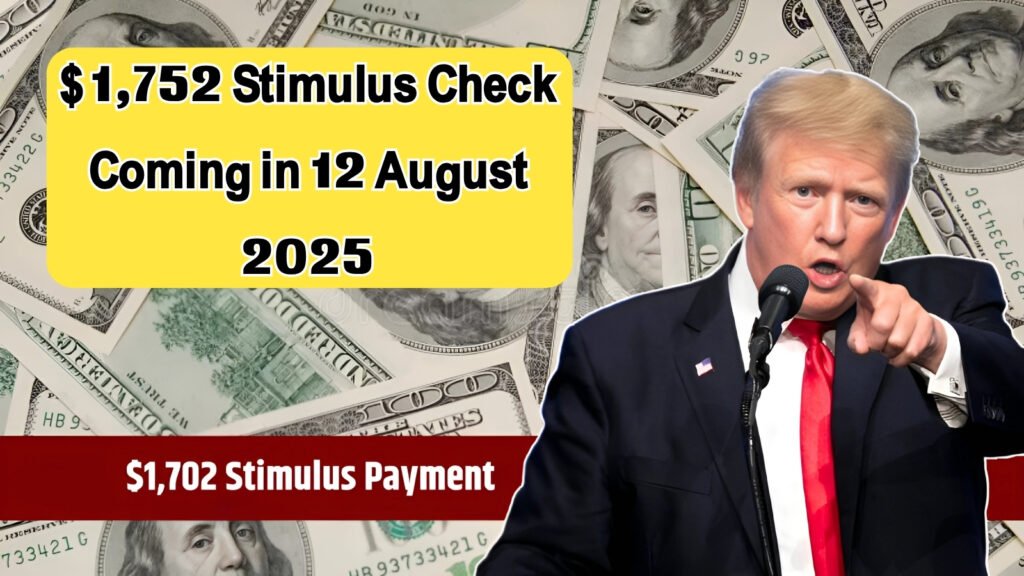Stimulus Check : In recent months, conversations about potential stimulus payments have circulated widely across social media and various online platforms. The figure of $1,752 has appeared in numerous discussions, often linked to proposals for emergency financial assistance or specialized relief programs.
While these discussions generate significant interest among Americans facing economic challenges, understanding the actual status and legitimacy of such payments requires careful examination of official government sources and verified information.
The concept of stimulus checks gained prominence during the COVID-19 pandemic when the federal government issued multiple rounds of Economic Impact Payments. These direct payments provided crucial financial support to millions of households struggling with job losses, reduced hours, and unexpected medical expenses.
The success of these programs has led to ongoing debates about whether similar measures might be implemented to address current economic pressures.
Current Economic Climate and Relief Measure Proposals
Today’s economic landscape presents unique challenges that differ from those experienced during the pandemic. Rising inflation, housing costs, and everyday expenses have stretched household budgets thin. Many families find themselves choosing between essential needs like groceries, medication, and utility bills. This financial strain has prompted lawmakers and advocacy groups to explore various forms of economic relief.
Several states have independently launched their own relief programs, distributing payments to residents through tax rebates, inflation relief checks, or specialized assistance funds. These state-level initiatives demonstrate a recognition of ongoing financial hardships and represent localized efforts to provide immediate support.
California, Colorado, and Maine have been among the states implementing such programs, though payment amounts and eligibility criteria vary significantly.
Separating Fact from Fiction in Payment Claims
The proliferation of information about supposed stimulus payments requires careful scrutiny. Unfortunately, misinformation spreads rapidly online, particularly regarding government benefits and financial assistance programs. Many claims about guaranteed payments or automatic deposits lack official verification from government agencies. The Internal Revenue Service and Treasury Department remain the primary authoritative sources for information about federal payment programs.
Legitimate government payments always follow specific protocols. Official announcements come through established government channels, including agency websites, press releases, and verified social media accounts.
Recipients typically need to meet defined eligibility criteria, and payment distribution follows transparent timelines. Any deviation from these standard procedures should raise immediate red flags about the authenticity of payment claims.
How to Verify Official Payment Information
Protecting yourself from misinformation and potential scams requires vigilance and knowledge of proper verification methods. The IRS website serves as the primary resource for federal payment information.

State treasury or revenue departments provide authoritative updates about state-level programs. These official sources offer accurate details about eligibility requirements, payment amounts, and distribution schedules.
Social media posts, forwarded messages, and unofficial websites often contain misleading or entirely fabricated information about stimulus payments. Even well-intentioned sharing of unverified information can contribute to confusion and false hope among those genuinely needing assistance. Before accepting any payment information as factual, cross-reference it with official government sources.
Available Resources for Financial Assistance
While specific stimulus check programs may not currently exist at the federal level, numerous legitimate assistance programs remain available for those experiencing financial hardship. The Supplemental Nutrition Assistance Program helps with food costs. The Low Income Home Energy Assistance Program provides utility payment support. Medicaid offers healthcare coverage for eligible individuals and families.
Local community organizations, food banks, and charitable institutions provide additional layers of support. These resources can help bridge gaps while households work toward financial stability.
Many communities also offer emergency rental assistance, job training programs, and financial counseling services designed to address both immediate needs and long-term financial health.
$1,752 Stimulus Check Coming in 12 August 2025
Maintaining realistic expectations about government assistance while actively pursuing available resources represents a balanced approach to financial challenges. Stay informed through official channels, but remain skeptical of sensational claims about guaranteed payments. Focus on accessing verified programs and benefits for which you qualify.
Building financial resilience involves multiple strategies beyond waiting for potential government payments. Creating emergency savings, even small amounts, provides a buffer against unexpected expenses. Exploring additional income opportunities, reducing unnecessary expenses, and seeking financial education resources contribute to long-term stability.
Honda City – Premium design sedan comes for down the market of others
The discussion around stimulus payments reflects genuine economic concerns affecting millions of Americans. While hope for additional relief remains, practical action using existing resources and verified information serves as the most reliable path forward during uncertain economic times.
